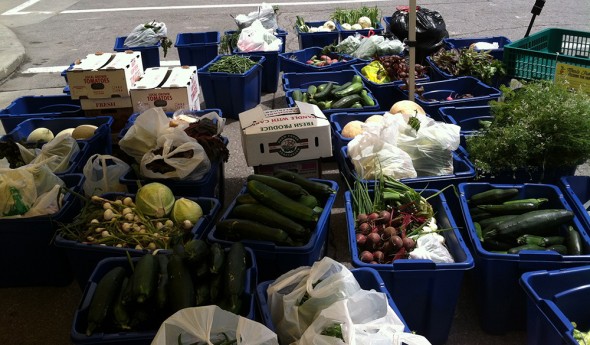
April is the time for farmers to start planting and gardeners to prepare their beds for a bounty of fresh produce. It’s also a good time for growers to think about how they can do their part to combat hunger in Iowa. An underutilized state tax incentive helps growers maximize their contributions to participating food banks and pantries, giving the gift of fresh and healthy food to Iowans who need it most.
The Farm to Food Tax Donation Credit allows taxpayers to receive a 15% tax credit, up to $5,000, in return for fresh produce, meat, and other wholesome food items donated during the tax year. Adopted by the Iowa legislature in 2013, the credit was underutilized in its first year, with only a small fraction of farmers and food organizations participating in tax year 2014. Iowa’s charities hope that broader awareness of the incentive will increase needy Iowans’ access to healthy food.
“As is typical with new programs, it takes time for the idea to gain popularity,” said Cory Berkenes, state director of the Iowa Food Bank Association. “We are confident that when more pantries and producers learn about this program, we will see a significant increase in donations of fruit, vegetables, dairy, and meat items.”
Last year 48 food pantries were registered to provide farmers the authorized receipts they need to file for the credit, and only 14 claimants returned receipts by a January 15 deadline.
The Drake University Agricultural Law Center has prepared a set of documents designed to help producers and food organizations understand and utilize the Farm to Food Donation Tax Credit.
“The process of making a donation and claiming this tax credit should be as simple and rewarding as possible,” said Kelly Nuckolls, a second-year Drake Law Student who helped prepare the documents. “These resources clearly explain the tax credit process, and inform farmers and gardeners about the amount of money they can save each year on their taxes.”
The documents, available at www.law.drake.edu/aglaw, include:
- The Farm to Food Donation Tax Credit flyer provides a simple guide to explain the tax credit for both taxpayers and emergency feeding organizations.
- The Farm to Food Donation Tax Credit case studies highlight different situations where a taxpayer may or may not be eligible for the tax credit; and if they are eligible, explain how the credit will impact their taxes.
- The Farm to Food Donation Tax Credit detailed guide provides more in-depth information on the tax credit for both taxpayers and emergency feeding organizations.
- The Farm to Food Donation Tax Credit Income Chart shows the comparison between a tax credit vs. a charitable contribution deduction, across all state income tax ranges, for a donation valued at $1,000.
The Iowa Food Bank Association collaborates with a network of eight food banks, 350 pantries and 650 other feeding organizations in the state. Fresh produce, dairy, and protein are the most requested items at food pantries, but those items are often in low supply because of their relatively high cost.
“When growers use the state’s tax incentive to allow them to give a little more, it really is a win-win for producers, food organizations, and families who are in need,” Berkenes said.
For Iowans who see farms everywhere and their abundance of agricultural production, it may be difficult to imagine that there are Iowa families who struggle to put food on their table. But one in eight Iowans experience food insecurity—including one in five Iowa children who do not have enough to eat. When it comes to farm fresh foods like fruits and vegetables, the challenge is even greater.
That’s why it’s important for Iowa organizations to do everything they can to promote awareness of the credit, said Rev. Sarai Schnucker Rice, executive director of the Des Moines Area Religious Council. The interfaith organization partners with 12 food pantries in Greater Des Moines.
“To really understand the importance of fresh produce to low income families, you have to imagine yourself in a world in which the only access to fruits and vegetables you have is canned peas and corn,” Schnucker Rice said. “That’s the world most low-income families live in. When you actually give them a juicy tomato, or green peppers, or a bright red apple, in that moment it’s the most exciting thing they’ve ever seen.”

